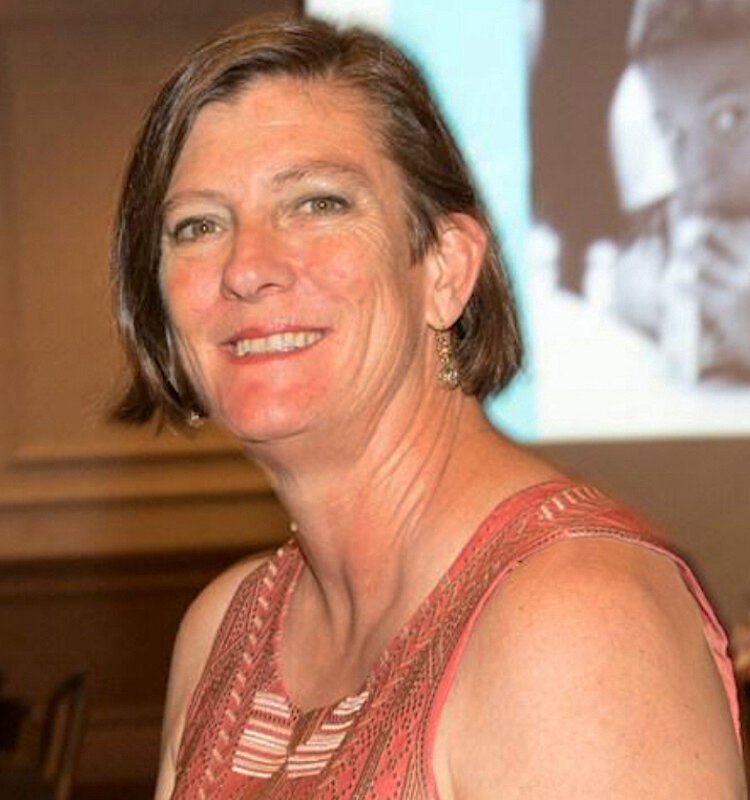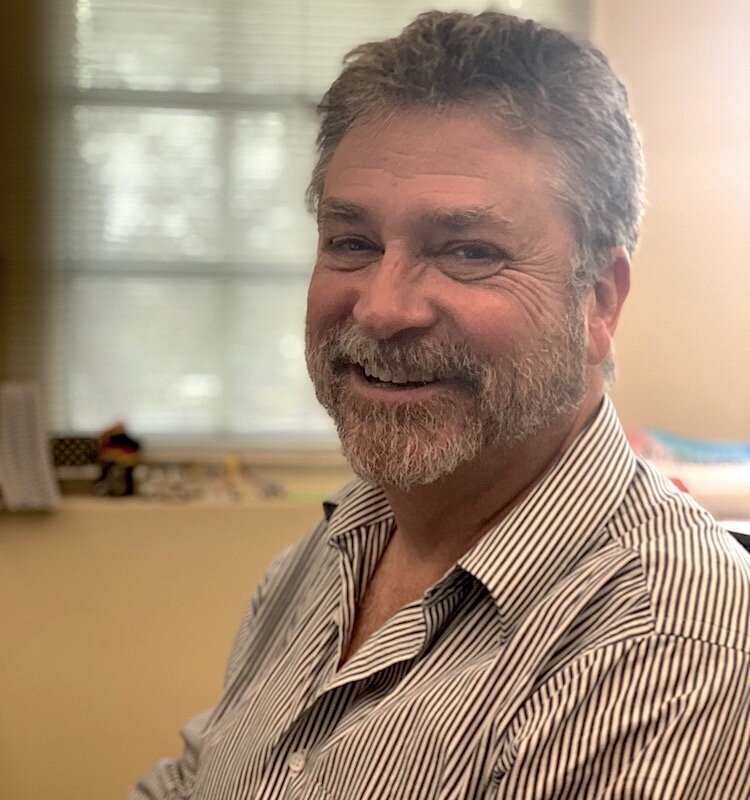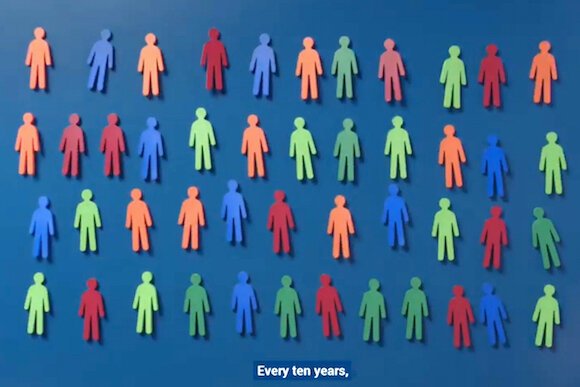Make it count: How Census 2020 benefits the Tampa Bay Area
What do you need to know to be counted in Census 2020? Why should you be counted? How can you help ensure a complete count in the Tampa Bay Area? Why does it matter? Read part 1 in a series.
Part 1 in a series
Census Day is on its way. The nationwide population-counting event occurs in every city of every state on April 1, 2020 — exactly 10 years after the previous Census Day in 2010.
The U.S. government has embarked on counting each American in the decennial Census since 1790 when the nation was still in its infancy. During that first Census count, the population of the United States was counted as 3,929,214 persons. Fast-forward to 2020, and it’s anticipated that the U.S. population could be more than 80 times that or about 330 million people.
While the national population has soared over the past two dozen decades, so, too, has the number of people living in Tampa and in the Tampa Bay Area.
The 1850 Census enumerated 974 residents living in Tampa, which at the time was barely more than a fishing village. By 1900, Tampa’s population had swelled to 15,839. A number of city annexations and explosive growth throughout the 20th century helped push the city’s population to 280,015 people by Census Day 1990.
And just a decade later in 2000, Tampa’s population had risen to 303,447. The most recent decennial count in 2010 found 335,709 persons living in the Tampa Bay Area’s largest city, and a 2018 population estimate — not a precise count, but an extrapolation of population figures from 2010 Census figures — suggests approximately 392,890 people lived in Tampa then.
But how many people live in Tampa now in 2020?
The importance of the Census being accurate is much greater than just gathering a mathematical abstract of how many people live in a particular city. Knowing how many people reside within particular geographical areas, including blocks, groups of blocks, zip codes, and various corners of the city, helps apportion funding for everything from schools and senior services to roads and police coverage.
And understanding the demographic composition of the population — age, sex, race, income, language spoken, marital status, etc. — provides even clearer details on the specific types of needs a particular community may have. This can help private entrepreneurs and public officials determine what types of community investments to make — or which ones may be more important than others.
That’s why local community leaders and Census Bureau officials are reaching out to all Tampa Bay Area residents to encourage everyone to participate in the upcoming Census. Hundreds of Census Bureau representatives will fan out throughout the region to conduct door-to-door counts, provide and process Census forms, and help inform the public on why it’s important to be counted.
Leading the Census Bureau’s monumental assignment are three local thought leaders who want the public to know why it matters that each of us stands up to be counted. They want everybody to know they have nothing to fear and everything to gain from responding to Census Bureau’s questionnaires — questions that, only when answered, will help lead to new solutions for our community.
Lesley “Les” Miller, Jr.
Chair, Hillsborough County Commission, District 3

Q: What do you identify as some of the challenges and opportunities unique to the Tampa area as it relates to the upcoming Census and enumerating local residents in 2020?
A: The biggest opportunity may also be the biggest challenge: How will you respond to the 2020 Census? The primary way to answer the 2020 Census will be online. The secondary way will be to respond via toll-free 1-800 numbers that will be supported in 12 languages, including English. Lastly, for those who have not responded by April 20, 2020, they will receive a final reminder letter along with a paper questionnaire they can mail back. This opportunity “could” be the biggest challenge. There are pockets of individuals, including the elderly, minorities, and immigrant communities, who may find it challenging to respond via the Internet, either because they do not have a computer or are not familiar with them. Therefore, Hillsborough County Complete Count Committees (HCCCC) is exploring ways to accommodate those individuals. We are partnering with libraries, parks and recreation, and businesses to open the doors and allow people to use computers on Census Day.
Q: The Tampa area has a large number of underserved and transient individuals, including those without permanent homes, children in between foster homes or guardians, and snowbirds who may be here during the April 1 headcount but who may not call Florida their permanent home. How can we avoid undercounts or overcounts?
A: HCCCC is working with group quarters and service-based organizations to count the homeless, children in foster homes, college students in dorms, etc. These groups will be counted where they are on April 1. To avoid undercounts, Hillsborough County is working with many trusted leaders and voices in the community. We have to get the word out about the Census. It is a matter of education. We must reiterate that the Census is important, it is safe, and it is easy. As for overcounts, the Census Bureau has a way of finding doubles and eliminating them.
Q: What advice or counsel might you offer individuals who are leery about providing their information for the Census count?
A: The Census Bureau does not ask for full social security numbers, banking information, credit card information, nor personal identification numbers (PINs). The Census Bureau cannot release any information to any governmental organization – police or otherwise. Personal Census information is held for 72 years before it can be released. Again, we must stress the importance, the safety, and the ease of the process.
Q: In a few words, why is it important that people participate in the Census count? What does it mean for them and for our community?
A: Everyone in Hillsborough County benefits from the money sent back to the states based on the Census count – transportation, streets, emergency services, hospitals, fire departments, senior programs, schools, and grant programs. The message to our constituents is that the money for these services follows the numbers, not the need.
Dr. Norin Dollard, Ph.D.
Director, Florida KIDS COUNT, and Assistant Professor, Department of Child and Family Studies, Louis de la Parte Florida Mental Health Institute, College of Behavioral and Community Sciences, University of South Florida
Q: Who living in or staying at your household should be counted on April 1, 2020? How will Census takers account for children who are in foster homes, between guardians, or away with a parent in a custody setting on Census Day?
A: Generally speaking, whoever wakes up in your household on April 1st should be counted in your household. Foster parents should count their foster children if those children are there.

Q: When you look at the Tampa Bay Area’s young population, those under 18, what do you see as the biggest challenge in ensuring each is counted?
A: The biggest challenge, I feel, is letting everyone know that the Census data matter for everyone. If you drive on a road, the Census matters. If you live in an area prone to disasters, the Census matters. If you own a business and are looking to describe a market, the Census matters. I think if people realized that the Census matters to them personally, they would take it more seriously. Now, having said that, the next challenge is that the Census is online this time. No more paper. Some 14% or so of Hillsborough residents don’t have access to wi-fi at home. The areas that don’t have the Internet are the same areas that are considered ‘hard to count.’ The people in hard-to-count Census tracts are those with complex family structures, maybe including people who are not related to one another. They are in areas where people don’t speak English at home, as compared to other sections of the county. They are in areas where the residents live in poverty.
Q: When looking at the 2010 count, do you see that a large number of children were left uncounted? Were there overcounts? What do we do differently in 2020 to lessen these margins of error?
A: Very young children are the most likely not to be counted. In Florida, 6.2% of children ages 0-4 were not counted in 2010, and that costs us $67 million dollars every single year. It is important to tell people that they should count everyone in their house, no matter how old you are. Babies who were born and still in the hospital should be counted in their household.
Q: What about the confidentiality of the information? Who has access to this data and what will they do with it?
A: Confidentiality and data breaches are a big concern to a lot of people. But Census data legally cannot be released for 72 years — not to landlords, employers, other government workers, law enforcement, or anyone else. There are enormous monetary penalties for Census Bureau staff who divulge Census data. The citizenship question (though not on the Census) still looms large for people of mixed-status households. Things that make people connect to the Census include that the money we bring back to Florida — $44 billion annually — is important because it funds education and childcare, and it also funds vocational training that helps people get jobs. Emphasizing these things in marketing is very important.
Glenn Brown
Applied Anthropologist, Children’s Board of Hillsborough County

Q: Do you find that many, maybe most, people don’t really realize how important the Census data is in securing grants and funds — both public and private — for various community issues? Would citizens be more willing to take the time to complete Census forms if they knew how it benefits them both directly and indirectly?
A: Yes, in general, on a day-to-day basis, I don’t think residents commonly consider this sort of thing. And yes, I do think if they understood how important to their daily life it is, they would take notice. Over the years I have had the privilege of reviewing hundreds of grant applications, many with good ideas but little information about the communities they hope to serve with those ideas, not understanding that demographic data is market research data, and that demographic data comes from the Census (and in between decades from the American Community Survey, which is sample data based upon the Census).
A good idea doesn’t go very far if it is marketed to the wrong community — meaning the people there may not need the service or have other issues that are more pressing that create a timing issue for that service which renders it undesirable. Data is fundamental to any public or private grant application. I think people better understand when they see the direct effect, the result, the product of funding. When people have problems with the roads in front of their homes, when they have trouble finding quality childcare, when they find out their children are eligible for free lunch at school, or that they qualify to get a loan for their small business idea because of federal allocations (or don’t have these things because we didn’t fully count and we didn’t get a large enough allocation to help everyone that would otherwise be eligible), that is when they take note of this sort of thing.
Q: How can a full and proper count of the region’s children ensure youth issues receive greater attention and better funding?
A: We use Census data to help us identify issues. We need to know what our demographics are for the county and how best to target our funding to address issues that impact our quality of life. There is really not another tool to objectively provide this information to us. This is important because when addressing quality of life and well-being, we are challenged with complex problems. There is not a single problem with a simple solution. Our challenges are what social scientists call “wicked problems,” or problems that require attention to more than one thing like health, income, or education. There tends to be an interplay among the elements that make the problems seem intractable — and many efforts to try to bring an amelioration of these problems seem like Band-Aids, despite great efforts to make a change.
Q: What is one of the biggest issues people face in the Tampa Bay Area?
A: Homelessness is one, but it’s symptomatic of something larger — larger in the sense of it being a collection of issues, such as children and families suffering a number of traumas that range from the obvious lack of safe shelter and food scarcity to missing school and suffering poor physical and mental health.
Homelessness is not simply one large issue. To try to get to the heart of what is happening, we need a good Census count to get the proper community demographics that can help provide a picture of the various community needs to target and address these things. Our Census count determines what percentage of federal funding we can receive to help with these issues, in the case of homelessness, there are Section 8 housing vouchers, Community Development Block Grant (CDBG) and Emergency Solutions Grants (ESG) dollars – all allocated to us in proportion to our population. All of these dollars go to programs that help with affordable housing. Also, State Children’s Health Insurance Program (SCHIP), Head Start, foster care, childcare and development funds, Medicaid, Title 1 educational and federal small business loans, and many more are also given in proportion to the Census count, and this sorts of funds help local communities work with the related issues of lack of insurance, access to early childhood care, etc., helping to ameliorate problems that are too large at this time for local communities to address on their own.
Q: Looking ahead at Census 2020, what are some of the biggest challenges we face as the Tampa Bay community in ensuring a complete count?
A: We have a large immigrant community who may be hesitant to provide information at this time. We also have a large population of people who rent housing and traditionally have a poor response rate, as well as areas described as urban enclaves that generally have high poverty rates and lower educational attainment in the area, along with areas that are student and military communities. Each has subtle reasons for poor response, but each area could see some improvement if education and support can be provided. Another population that tends to get skipped in the count are young children, foster children, or those from another relative who are living in the home for any number of reasons. Again, education to reduce any fears about being counted can help with getting a better Census — of course, this is going to be a bit trickier than it sounds.
For more information about Census 2020, follow these links:
- Census Bureau
- Census Bureau community profiles
- Florida Counts — Census 2020
- Florida Kids Count – Census 2020
- Count All Kids – Census 2020
- Uses of Census Bureau Data in Federal Funds Distribution














